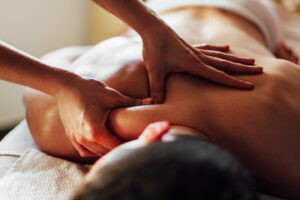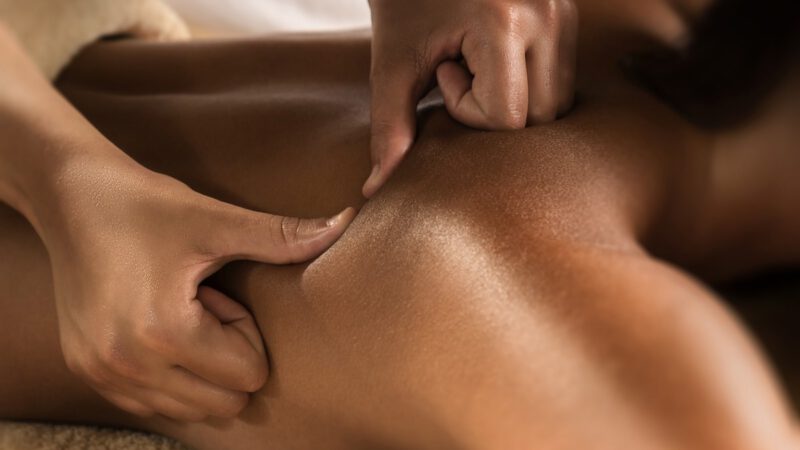The Benefits of Massage Therapy
Massage encourages the flow of nutrients and oxygen through the body and eliminates waste products like toxins and carbon dioxide. It also increases the production of killer cells that help the body fight off infection.
Physical touch releases “feel good” hormones such as oxytocin and endorphins, which help reduce anxiety and depression. Patients with psychological problems find that massage helps them feel cared for, allowing them to open up and discuss their issues. Visit https://www.flowstate918.com/ to learn more.
Massage is the rubbing or kneading of soft tissues in the body using hands, fingers, elbows, forearms, knees and feet. Massage therapy can help release tension and anxiety as well as increasing circulation boosting your overall health and wellness. Massage improves muscle and tissue elasticity which can decrease pain due to tightness from overuse, injury or just everyday wear and tear. Massage also stimulates the production of hormones such as endorphins, serotonin and dopamine which act as natural pain killers as well as improving mood and reducing stress.
Massage increases your body’s temperature which can help break down knots allowing the muscles to relax. The friction created during massage increases capillarisation and vasodilation resulting in more blood flowing to the area being massaged. This results in more oxygen and nutrients getting to the muscles which can speed up recovery time from exercise and injury. Massage also encourages the movement of lymph fluid boosting the immune system.
Many people feel a sense of euphoria after a good massage. This feeling is the result of the hormones released during massage such as endorphins, oxytocin and dopamine which all act to reduce depression and anxiety, lowering stress levels and creating a sense of wellbeing.
A great massage can also help with sleep issues. Studies show that regular massage can improve sleeping patterns and alleviate insomnia. This is due to the calming effect that massage can have on the nervous system by stimulating your parasympathetic nervous response (your rest and digest response) whilst calming down your sympathetic nervous system (the fight or flight response).
Getting a good nights sleep is crucial to our health and well being. Studies show that chronically stressed people suffer from sleep disorders and this can be improved with massage as it can balance the body’s endocrine system.
Pain Relief
Pain relief is one of the main reasons people get massaged. It decreases the level of pain experienced and increases your ability to move and carry out daily activities. This is largely due to an increase in range of motion and decreases in muscle tightness.
The occurrence of pain can be caused by injury, trauma or muscle overuse. When this occurs, receptors in the skin send signals to nerves which then create a feeling of pain. During massage the muscles in the affected area are stimulated which interrupts these pain pathways. This results in the pain not reaching the brain and the level of the pain decreases.
During massage, friction between the skin and fingers stimulates the autonomic nervous system. This is the part of the body that controls the rest and digestion functions. When this part of the body is activated during a massage, it causes the heart rate to slow down, saliva secretion starts and resources are allocated to digestion and restorative functions rather than the fight or flight response of the sympathetic nervous system. This results in a reduction of stress hormone cortisol and an increase in neurotransmitters such as endorphins, serotonin and dopamine which are feel good chemicals that help to relieve anxiety, stress and depression and encourage relaxation, happiness and motivation.
A study assessing the effect of massage on musculoskeletal pain populations found that massage was associated with an increased activity level and health related quality of life compared to a control group. It was also found that the massage groups reported less pain and stiffness.
When muscles are injured they tense to guard the area in an attempt to protect it. This prevents movement and can lead to decreased blood flow. Massage increases the flow of oxygen to the affected areas and breaks down adhesions allowing the muscles to relax and heal.
When a muscle is injured the brain releases an opioid which acts as a natural pain killer. This substance can be used to reduce pain levels but it is not effective at treating chronic pain which can last longer than 12 weeks. Chronic pain is a difficult condition to treat and requires regular massages which can help to relieve the symptoms.
Boost Immunity
Regular massage helps improve your body’s white blood cell count, which plays an important role in fighting off disease. This is a big benefit during flu season, when your immune system is being called upon to fight off the virus. This is why it is important to get a massage often during this time.
Another way that massage boosts immunity is by reducing the levels of cytokines, which are chemicals in your blood that play a role in inflammation. By lowering the level of cytokines, massage can reduce the symptoms of a number of illnesses, including cardiovascular disease, asthma and depression. It can also help lower the levels of cortisol, which is a stress hormone, and vasopressin, which plays a role in aggressive behavior.
Researchers found that people who received 45-minute sessions of Swedish massage had an increase in their lymphocyte counts, which are a type of white blood cell that plays a big role in the body’s defenses against diseases. The study was conducted by researchers at Cedars-Sinai Medical Center in Los Angeles, who had healthy volunteers undergo a series of treatments. The treatments consisted of either a 45-minute Swedish massage or a light touch control treatment.
The results showed that weekly Swedish massage led to a pattern of increases in the circulating phenotypic lymphocyte markers and decreases in mitogen-stimulated cytokine production, similar to those seen in other studies. Twice-weekly massage caused a different pattern, with a decrease in OT and salivary cortisol and an increase in ACTH and plasma cortisol, and only a minor effect on circulating lymphocyte phenotypic markers or mitogen-stimulated cytokine expression.
These findings indicate that the effects of massage on the innate and adaptive immune systems are complex. The different patterns observed in this and other studies of the immunomodulatory effects of massage may reflect the fact that the “dosage” of massage – its frequency, duration and type – can lead to profoundly different biologic responses. Further research is needed to understand these differences and the specific therapeutic effects of massage for different populations such as stressed or immune-system-compromised individuals.
Enhance Athletic Performance
Getting ahead in any sport isn’t just about talent and countless hours of training; the way an athlete recovers and maintains their body plays a major role as well. This is why athletes across all disciplines incorporate massage into their training regimens. This holistic form of bodywork has a number of benefits that help to alleviate pain, speed up recovery and enhance performance.
When muscles are worked hard they produce toxins such as lactic acid that build up and lead to stiffness and reduced range of motion. Regular massage encourages circulation and flushes the toxins from the tissue, leaving it looser and more flexible.
As the tissues of the body are manipulated during massage, blood circulates at a faster pace which improves oxygenation, helping the muscles to work harder. This also helps to reduce post-workout soreness.
Many athletes who suffer from the aches and pains associated with exercise find that getting regular therapeutic massage can be beneficial. The calming effect of massage activates the parasympathetic nervous system, which relaxes the muscles and keeps cortisol levels low, which in turn boosts the immune system. In addition, sports massage can improve sleep which is vital for maintaining a healthy body.
The calming effects of massage can be particularly helpful for those who are competing in high-pressure or physically demanding sports. It can help to de-stress the mind and allow the athlete to focus on their goals, which is essential for peak performance. The release of endorphins after a massage can also promote a positive mental state, enhancing the athlete’s ability to perform at their best.
The studies that have been conducted on the subject of massage and athletic performance have been limited in scope. Most have compared results between subjects who had received a massage before a hard effort with those who did not receive a massage before the test. A more comprehensive review of the research is needed to determine how pre-event massage can be used most effectively. Nonetheless, it is clear that longer duration passive manual massage techniques should not be recommended for immediately enhancing young athlete’s lower-limb maximal strength, sprint or vertical jump performance.

